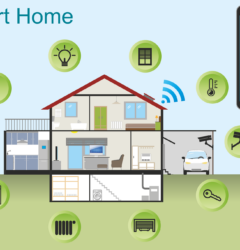18 Aug

Since COVID and the move to working from home, businesses have relied on their PCs more than ever before to successfully perform their core business operations. However, over time, you may notice that your device has slowed down and no longer operates as it used to, or your system is not up to date with the latest that is available.
So when should you replace your PC and when should you upgrade?
When it’s time to Replace
- The number one thing to look out for is your Operating System. If you are still using anything below Windows 10 Pro, you should seriously look to replace your PC as any older OS is out of support and no longer receives updates of any kind. Purchasing a new device that has Windows 10 Pro, essentially hits two birds with one stone by getting a new machine and Operating System.
- Still using a desktop? This is not ideal to be able to work from home when required. You should look to replace any desktops with laptops as with COVID, we never know when we will be forced to work from home or need to handle an emergency over the weekend. Hauling a desktop to and from the office is just not practical.
- You might find that your device is so old that upgrade parts are no longer available and now is the time to replace your machine.
- Any processor that a device utilises that is not a minimum of an Intel Core i3 is usually not ideal for business use. If your machine is using a CPU such as a Celeron, then you should replace it.
- Warranty is another very important factor to consider when your device goes out of warranty. They usually last around 2 years and is a good indication of when to buy a new machine.
- If you are not sure about the above requirements, generally, if a device is older than 5 years you should really consider replacing it.
When it’s time to Upgrade
If your device already has most of the specifications mentioned above but may only be lacking in minor areas, then you can upgrade. For most cases, the following can be upgraded:
- RAM – Windows 10 Pro operates best by using 8GB of RAM. Whereas some PCs only come with 4GB, it is easy to install another 4GB if your PC allows for the upgrade.
- SSD – Most PCs come standard with a normal Hard-drive. Upgrading to an SSD (Basically a really fast Hard-drive) drastically improves the performance of your device as booting and accessing files is a whole lot faster and you will notice the difference immediately once upgraded.

Need a hand?
If you as a Business Owner are trying to handle these upgrades yourself, you should really consider talking to an IT partner to complete an assessment on your IT assets and recommend, plan, and complete these upgrades. This will allow your entire business to perform at its best.
Contact us now for assistance.
Follow us on Facebook and LinkedIn!



Recent Comments